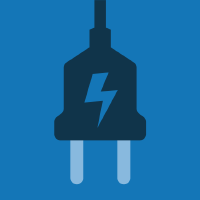Topic Menu
► Topic MenuTopic Editors

Future Electricity Network Infrastructures
Topic Information
Dear Colleagues,
This Topic aims to provide a platform for researchers and practicing engineers to share their ideas, recent developments, and successful practices in power and electrical engineering. The issue will publish high-quality papers that are strictly related to the various theories and practical applications in the area of machine learning applications based on future power system operations with high penetration of renewable resources and its related network architecture. Topics of interest include but are not limited to:
- future electricity network infrastructures
- machine learning
- DC network architecture
- smart and intelligent buildings
- smart EV charging
- smart cities
Prof. Dr. Tek-Tjing Lie
Prof. Dr. Guojie Li
Topic Editors
Keywords
- smart cities
- smart buildings
- smart EV charging
- smart grid
- electricity network infrastructures
Participating Journals
| Journal Name | Impact Factor | CiteScore | Launched Year | First Decision (median) | APC |
|---|---|---|---|---|---|

Inventions
|
2.1 | 4.8 | 2016 | 21.2 Days | CHF 1800 |

Sensors
|
3.4 | 7.3 | 2001 | 16.8 Days | CHF 2600 |

Electronics
|
2.6 | 5.3 | 2012 | 16.8 Days | CHF 2400 |

Electricity
|
- | 4.8 | 2020 | 27.2 Days | CHF 1000 |

Energies
|
3.0 | 6.2 | 2008 | 17.5 Days | CHF 2600 |

Technologies
|
4.2 | 6.7 | 2013 | 24.6 Days | CHF 1600 |

MDPI Topics is cooperating with Preprints.org and has built a direct connection between MDPI journals and Preprints.org. Authors are encouraged to enjoy the benefits by posting a preprint at Preprints.org prior to publication:
- Immediately share your ideas ahead of publication and establish your research priority;
- Protect your idea from being stolen with this time-stamped preprint article;
- Enhance the exposure and impact of your research;
- Receive feedback from your peers in advance;
- Have it indexed in Web of Science (Preprint Citation Index), Google Scholar, Crossref, SHARE, PrePubMed, Scilit and Europe PMC.


